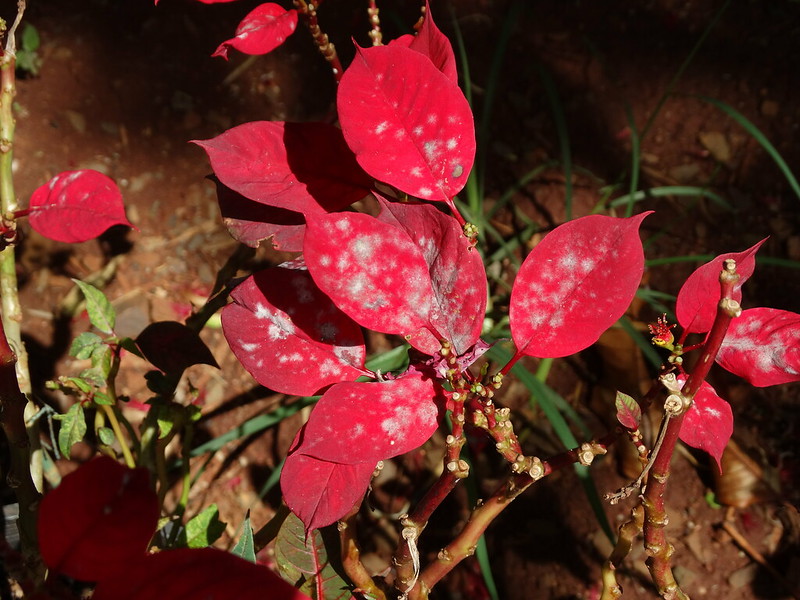Euphorbia Is Dying
Euphorbia is a diverse genus of houseplants. While these plants can look drastically different, they all have relatively similar care requirements. Place Euphorbia plants in bright, indirect sunlight. This succulent needs average humidity, and water when the top couple of inches of potting mix dries out. Fertilize Euphorbia monthly when the plant is actively growing.
Inspect the plant at the first sign of trouble. Look at the color, texture, and consistency of the foliage. The leaves should be firm and free of blemishes or soft spots. Direct sunlight will burn the foliage, while overwatering will cause discoloration and weakened foliage.

Photo by Scot Nelson
Euphorbia Leaves Turning Yellow
Yellow Euphorbia leaves are often a sign of improper watering. The leaf tips turn yellow when the plant is overwatered. The foliage will gradually swell, and the leaves will die. Under-watered plants will also develop yellow leaves, but the leaves will start to wrinkle. Adjust the watering routine when the plant is showing signs of improper watering. Monitor the soil and only water when necessary.
Lower leaves turn yellow when Euphorbia plants are suffering from a nutrient deficiency. Repot the plant using rich, well-drained soil as necessary. Fertilize the plant monthly during the growing season using plant food for cactus or succulents.
Euphorbia Pests
Pests are rarely a problem for Euphorbia houseplants. Mealybugs and spider mites are the most likely culprits if there is an issue. Mealybugs are sap-sucking pests that latch onto stems and appear as white, fuzzy bumps. Treat mealybugs by cleaning the plant and wiping down the foliage with a diluted rubbing alcohol solution.
Spider mites create delicate webs and pierce holes in the foliage where they feed. The holes will turn brown as the growth dies. The population can explode if left untreated, and the actual mites will be visible before long. Treat spider mites by cleaning the leaves. Wipe the foliage with a damp cloth, and be careful if the cultivar has pointy spines.
Use an insecticidal soap to treat a heavy or continued infestation of mealybugs or spider mites. Mealybugs and spider mites are more likely to be an issue when the humidity is low. Ensure the humidity is appropriate for the specific Euphorbia cultivar. Most varieties thrive in average humidity.
Euphorbia Diseases
Diseases are not often an issue for Euphorbia, but overly damp conditions can cause root rot or support fungal growth. Plants with root rot develop yellow foliage and soft stems in advanced cases. Fungal infections cause discoloration and dead growth. Treat root rot by removing damaged growth and allow the plant to dry out before watering. Fungal diseases can be treated with a fungicide or by removing the infected growth. Ensure the humidity is not too high and keep the foliage as dry as possible by applying water to the potting mix and not the plant.

Photo by Scot Nelson
Euphorbia Not Blooming
Most Euphorbia plants bloom, but the conditions must be ideal. Plants that receive improper water, sunlight, and nutrition are less likely to flower. Slightly rootbound plants can bloom, but plants that are very tight in their pots will not. Fine-tune the care, ensure the Euphorbia is not rootbound, and the plant should bloom.
 |
Author Alison Cotsonas - Published 01-08-2024 |
